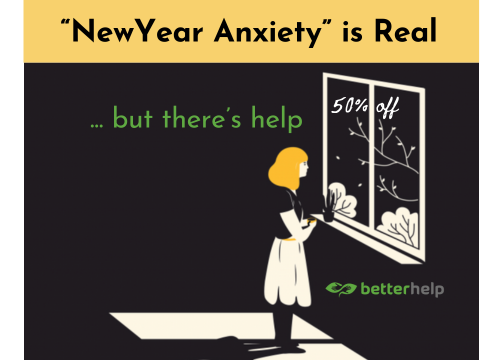{*Did you know you can write on Elephant? Here’s how—big changes: How to Write & Make Money or at least Be of Benefit on Elephant. ~ Waylon}
~
When I started my yoga journey, I used to hate Ashtanga.
It felt too fast paced, forceful, and difficult having to pay attention to all the correct poses linked with breathing while maintaining a focal point.
Then I signed up for yoga teacher training, and I wasn’t happy when Ashtanga was included, but what can you do when you’re already there? So I kept showing up every morning on the mat, chanting the opening mantra “vande gurunam…”
Weeks and weeks passed and by the end of the training, I started to love this strict practice. It gave me direction and anchored my monkey mind in the present moment. I returned home and kept the sequence as my home practice.
And it felt good.
But then it didn’t.
After practicing for months, beyond the exhaustion and bliss that I usually felt during practices, I started to have other feelings that disturbed me: anger, fear, anxiety, even joy, and I often bursted out in laughter for no reason.
But more other than anything else, I cried.
I have a brain that loves to analyze everything, and I love to write, so naturally I started to journal after my practice and wrote down my feelings and my realizations.
There are many reasons one can cry during ashtanga yoga, and it doesn’t need to be esoteric or deeply spiritual.
It can be due to many reasons:
Pent-up emotions:
My guru, Pandey Ji, explained that emotions can be stored in the body for long time if they are left unexpressed. This can lead to physical symptoms such as stiffness of the muscles, tension, and pain in certain body parts, and even disease and illness in the long run. When we release the tension and stiffness of the muscles, naturally it will release the pent-up emotions as well.
During the years, a lot of emotions (like grief) can be stuck in the body, and we can add some extra during the practice too: frustration and dissatisfaction with yourself, your body, or your lack of focus.
Pratyahara:
Pratyahara means inward focus. Something most of us lack in our daily lives and many of us only allow ourselves to do when we are on our yoga mat. Our attention goes inward, to how our bodies feel as we move and transition between asanas and how we breath during them, hence (rather subconsciously) we start to feel the changes each pose creates in our body—physically and emotionally—giving us space to release and connect with those pent-up emotions.
Pranayama:
Ashtanga yoga places a lot of emphasis on the breath (pranayama). “Breath is the heart of yoga,” as many yogis say.
“When the breath wanders the mind also is unsteady. But when the breath is calmed the mind too will be still, and the yogi achieves long life. Therefore, one should learn to control the mechanism of breath.” ~ Hatha Yoga Pradipika
I learned during my teacher training that incorrect breathing can lead to more tension, exhaustion, aches in the body, and illness. On the contrary, correctly performed pranayama improves our focus and concentration, helps to eliminate toxins, strengthens the immune system, increases metabolism and digestion, lowers stress, tension, and anxiety, fuels our overall energy, and stimulates the body’s natural ability to heal. That’s a lot of things, and they can make us reach for the tissue.
Asana:
There are many poses (asanas) that are said to help release emotional tension; many of these poses are included in the primary series of Ashtanga (and the others, too), which is what most Ashtangis pratice for the longest time.
Poses like uttanasana (standing forward bend), urdhva mukha svanasana (upward facing dog), and parivrtta utkatasana (chair pose) that work your chest, shoulders, and hips are beneficial and can make you cry.
Exhaustion:
Many times, we don’t even notice how tired we are. Especially if you choose an intense practice like ashtanga, when you already lead a fast-paced life, it can result in crying during practice. The body needs balance, so if your life is sped up, don’t go beyond your limits and push yourself to exhaustion with stressing the body more. Try a slow-paced class or yin yoga. In this case, tears may indicate that your body is begging you to slow down and rest.
Now you know some reasons that might make you shed tears on the mat. So let’s take a look at how you can deal with it.
You have an easy job if you practice Ashtanga in the safety of your home (which can add one extra reason why you might cry—because you feel safe).
If you practice in a class, this might feel embarrassing, especially if you experience it for the first time. Make sure you feel safe with your teacher and your environment and that you have a place to retreat to, during or after the class, should you need it.
During class, there’s always the option to retreat in child’s pose or leave the room and spend some time (or the entire time left from the class) in the changing room.
After class, you can journal about your experiences as I do, or walk it out in the park, discuss it with your teacher or with a friend, or use any other method that helps you to process emotions and feelings. I have a friend who likes to visit a certain place in the forest and just yell.
Know that it’s completely normal to cry during Ashtanga (and so is never getting so emotional during class).
I used to be worried that something might be wrong with me, but I realized that it’s a sign of my body healing, letting go of old trauma, and finally moving toward balance. Not to mention how good it feels after.
~
{Please consider Boosting our authors’ articles in their first week to help them win Elephant’s Ecosystem so they can get paid and write more.}












Read 1 comment and reply